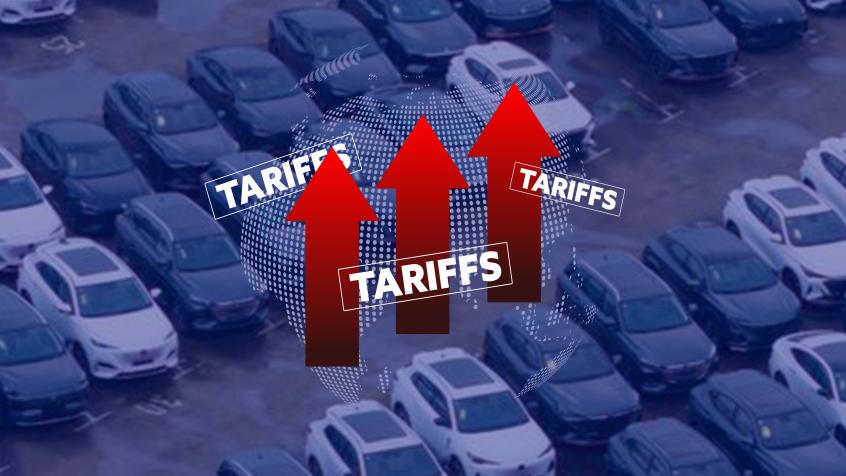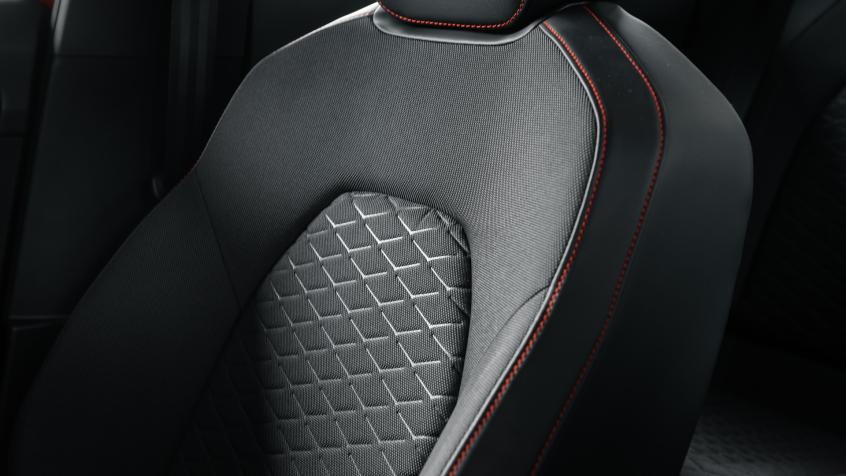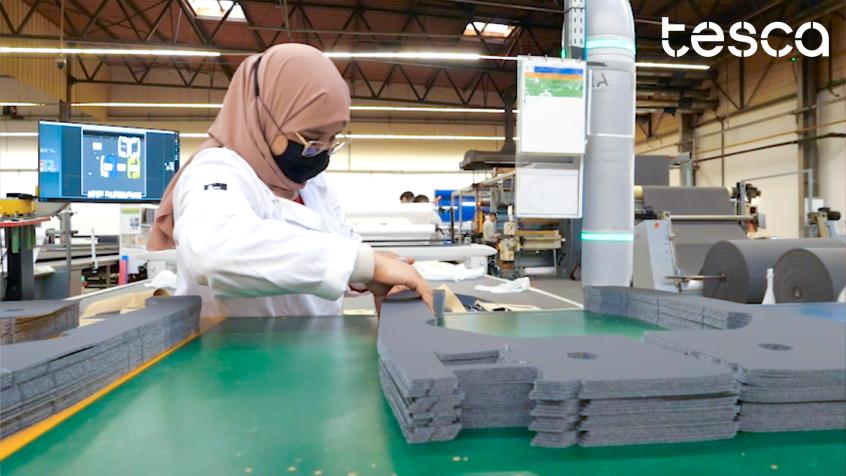Ditching volume for value: A new perspective on cost reduction in the automotive world
Our connected, Industry 4.0-compliant Vector cutting equipment can help you increase your profit margin per vehicle effectively.

Renault announced its ‘Renaulution’ plan
In January 2021, Renault announced its ‘Renaulution’ plan, shifting their focus ‘from volume to value’. Automotive companies like Renault are now producing higher margin, technologically advanced cars, and choosing to increase their profit margin per vehicle instead of solely relying on large sales volumes. The profit-margin-per-vehicle approach has become the preferred KPI used for ranking OEMs, and a key investment driver for innovation, which plays a pivotal role in reshaping the automotive industry.
This, in turn, gives them the flexibility to produce a wider variety of cars and not depend on mass production as much. While this approach comes with numerous advantages – such as more room for innovation, better quality cars, and improved environmental sustainability by producing precise quantities to meet market demand, this also increases cost pressure for OEMs and tier suppliers.
To stay profitable, OEMs have to either increase their prices (for e.g., Audi) or minimize the manufacturing cost of each car to help their customers stay price-competitive (for e.g., Dacia). Automotive companies that are “sandwiched” between the premium and low-cost categories are disadvantaged in a way, because they do not have pricing power, nor do they have economies of scale to keep their prices down. Many of them are trying to move up to the premium category by producing cars that are more luxurious.
For tier suppliers, especially car seat manufacturers, the question now is on how to stay competitive and increase their profit margin per vehicle, while providing a wider variety of high quality vehicle interiors. They can achieve this by reducing OpEx with world-class cutting technology that can help increase fabric savings.
How to increase your profit margin per vehicle in the cutting room
Fabric savings play a significant role in cost reduction. Here are four main tips on how to increase them:
Invest in Industry 4.0-compliant machinery for the future
Data is power. And a way to get data intelligence is by allocating more of your capital expenditure (CapEx) to Industry 4.0-compliant solutions. This actually decreases OpEx in the end, because of the long-term benefits of capital investments. Forward-thinking manufacturers should digitize their plants by investing in Industry 4.0 technology such as cloud-based analytics to get a better overview of each production stage, allowing them to continuously improve their processes. That way, they can establish KPIs, identify areas of improvement quickly and improve collaboration to increase agility and production speed. This allows them to switch between producing bigger and smaller volumes, especially when it comes to mass-customized items. Additionally, Industry 4.0-driven processes will allow these manufacturers to increase material savings and minimize production costs through operational excellence.
Achieve almost zero-buffer cutting with best-in-class equipment
When it comes to cutting, a mere 1 mm reduction in buffer can translate into at least a 1% gain and several hundred thousands of dollars in material savings. For example, if you are using 40 kilometers of fabric per month, you can save up to 400 meters, which adds up to 4,800 meters annually. With an average cost of $27 per meter, a 1% increase in material gain can lead to $128, 800 in cost savings. Well-designed blades and built-in smart maintenance, and management systems and sensors can facilitate zero-buffer cutting and minimize fabric waste. Aside from material savings, generating less fabric and leather waste means not having to deal with their management costs. You can also optimize fabric consumption by having cutting equipment that can be integrated with a good nesting software program. You can nest your pieces and simulate the cut beforehand to ensure zero-buffer cutting.
Reduce waste (scrap and consumables)
There are four main factors of a high scrap rate: low quality raw materials, equipment, poor operating practices, and cumbersome production setup processes. First and foremost, it is important to provide your cutting room personnel with easy-to-use machinery that have high-quality blades to increase precision. Improving the training process with quick wins and a step-by-step method might help your operators gain confidence and ample knowledge to use the machines at ease. Examining your past failed products together as a team is necessary to tweak your current processes. Having a connected dashboard or a platform can help all team members access centralized data and analyze past cutter performances to identify and eliminate roadblocks. Besides fabric scraps, consumables make up a big part of the overall waste generated by the cutting process. You should also invest in machines with long-life consumables to reduce replacement costs, improve machine availability and minimize OpEx.
Limit recuts with connected cutting equipment and a remote maintenance program
Invest in connected cutting machines that can enable you to handle complex fabrics to avoid errors and recuts with the smallest buffer between parts. Owning equipment with functionalities that can help you overcome different and complex fabric challenges without losing any productivity (which is, money and time) is essential. For example, managing materials such as woven foam, foam-backed vinyl, and Alcantara requires a great deal of attention.
Poorly maintained machines tend to cut with buffers between parts. With predictive maintenance, you are not just preventing errors and rework – but also finding the root cause of your technical issues and eliminating it ahead of time to ensure that your cutting equipment is always performing at a maximum level. A good maintenance program should include both online and on-site technical support. Your vendor’s technical team needs to monitor your cutting machines remotely, and provide extended hours of assistance. Receiving customer care and maintenance reports on a constant basis, being debriefed directly by your vendor’s customer care experts with metrics will help you get a clearer picture of the current state of your cutting room and enable you to improve your maintenance strategy.
By dramatically increasing fabric savings, you can increase your profit margin per vehicle and compete in this new business environment. This approach gives you more flexibility, which allows you to increase profitability for each vehicle-seating program.
Related Content







